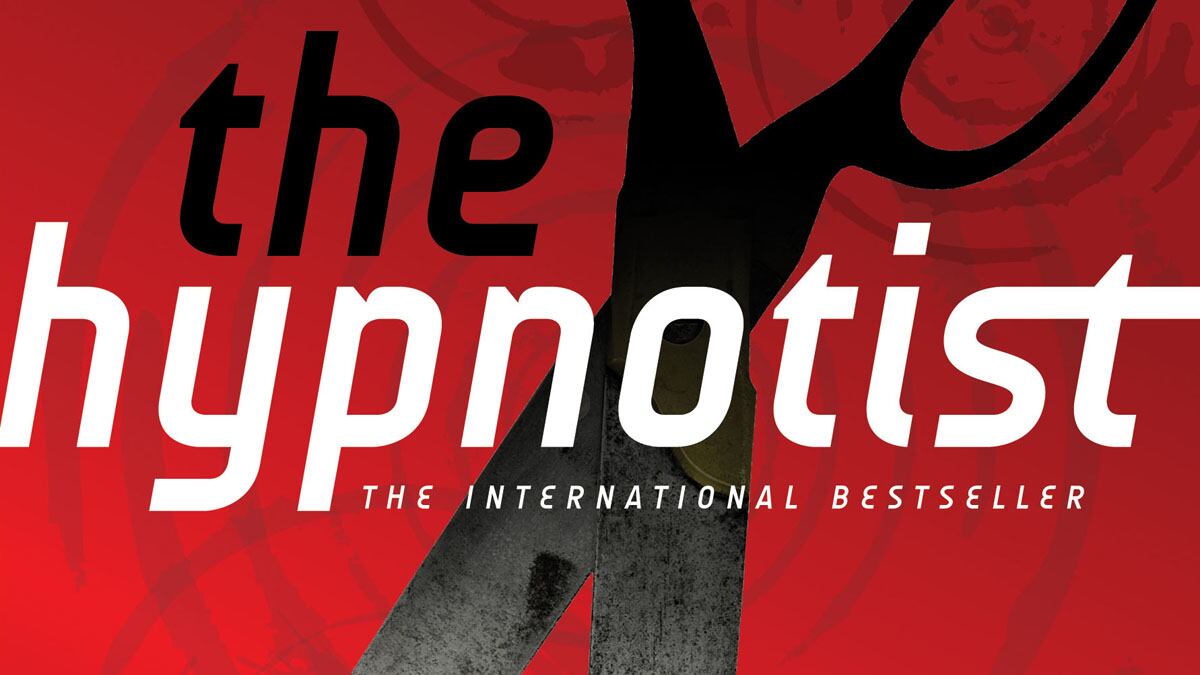“Writing a book is not a crime.”
These are the words of Alexander Ahndoril, one half of the husband-and-wife team who, in the summer of 2009, convulsed all of Sweden in a Primary Colors-esque manhunt for Lars Kepler, the utterly made-up author of their megahit, The Hypnotist. The story of detective Joona Limma and the clinical hypnotist Eric Maria Bark, their co-written tale of gruesome family murders, child abductions and, of all things, a teenage Pokemon crime ring hits shelves here June 21.
Alexander, a stereotypical ghostly, Fargo-esque Swede, and Alexandra, a delicate, auburn haired beauty (yes, Alexander and Alexandra), are still bemused by the international maelstrom they caused, which came complete with a tip line and computer text analyses. When a Swedish tabloid finally broke the case, two reporters showed up in the middle of the night on the doorstep of the couple’s summer home, greeting the two “in their jammies” with the flash of a camera, as if the authors were criminals themselves.
Luckily, unmasking perpetrators is the bedrock of the Ahndoril writing philosophy. “For me, crime fiction is optimistic,” Alexandra declares. “You can actually find a hero to solve the crime.”
For now, American readers are ignorant one ever occurred. Unless you are scanning trade journals and blogs obsessively for signs of the next Nordic invasion (or speak Swedish), you'll know nothing of Lasse Hallstrom’s forthcoming film, or the couple’s sequels, The Paginini Contract and The Witness of Fire, which promise to dwarf their predecessor. The Hypnotist has captivated Europe, with groundbreaking sales in 36 countries, and vaulted a little-known literary couple to superstar status. (Full magazine covers of the photogenic pair abound.) Here, passing mentions in Time magazine and The New York Times total a few dozen words. The book sold to Farrar, Straus & Giroux at auction at a steep price on the strength of success abroad. But will our mystifying devotion to Larrson's introduction to the Swedish social safety net, ancestral incest, and a raft of unpronounceable surnames lead us to embrace the imaginary Lars with the same enthusiasm?

Those expecting the next Dragon Tattoo will not get it. In some ways, The Hypnotist hews closer to the American gumshoe tradition. We’ll all recognize the scene on the first page: a man awakened by a ringing phone at dawn who leaves his beautiful partner to speed off, Miles Davis’ “Kind of Blue” on his car's stereo.
But, though it seems almost impossible, The Hypnotist is far grislier than Dragon. It launches with a family hacked to death by one of its members, the mother's abdomen reduced to “a bloody bowl of entrails.” Children (extreme grossout-slash-spoiler alert) linger in cages for years, starving; are held in sexual slavery by a brother; are punished by having noses cut off with scissors. Even the chapters are shorter and choppier, like stab wounds, a far cry from Larsson’s near-Talmudic tangle of dynasty and circuitry.
But the most abrupt departure comes with the novel’s enemies. Larsson demonized men, letting his heroine, Lisbeth Salander, wield a taser in all the wrong places. InThe Hypnotist, it’s--viva the literary meritocracy!--women and children who terrorize. You can see a Hollywood producer wracking her brain, then selling it as The Hand That Rocks the Cradle by way of Children of the Corn.
Yet, unsurprisingly for a book written by a married couple with children, it’s also about family—the force of love, love's betrayals, and, most important, its barbarous underpinnings. Even the revelation of who wrote the novel involved the actual Ahndoril family. Alexander drew heavily on the work of his brother, a clinical hypnotist, for the complex and fascinating character of Bark—and that brother was the only one in a nation of ignorants to guess the authors’ identity before it was officially revealed. (He kept the secret.)
Kepler is also a family affair. Far from a publicity stunt, the pseudonymous scribe emerged as the result of a private, longtime effort of the Ahndorils to find a project they could work on together without friction. Once they invented their productive third party, they sat side-by-side, writing in tandem, emailing or texting each other instead of speaking, then chattering about Kepler's plans on off-hours. “We didn’t have to fight anymore when we created a pseudonym,” Alexandra says. “It had a voice of its own.”
Now, Lars maintains a place in the family, with hobbies and habits to match. According to the couple, he likes romantic comedies, and, like hypnotist Bark, “something has happened in his life” to put him in his semi-miserable circumstances. (Royalty checks, after all, must go to the corporeal.) “He wants to be a detective, like Joona, but he can’t,” Alexandra offers sympathetically.
The real-life Ahndorils are immeasurably grateful for their creation, who has given them the ability to dispense with the writer’s burden of freelance reviewing and teaching. “Now we can actually afford to write,” Alexandra says happily. They’re not slavedrivers, but, as if to prompt Kepler, they keep a box in the house into which they drop clippings that might be of interest for him. (“Do you read them?” “Oh, no.”)
It’s a fair analogy for how The Girl with the Dragon Tattoo reached us—not by an ad campaign or critical praise, but by some mystical collective unconscious chanting to the globe, Swede now! Swede now! Kepler’s moody, entrancing work is certainly Swedish, certainly compelling to much of the international reading public, and shortly on our shelves. It only remains to be seen if America’s still on the same wavelength.





